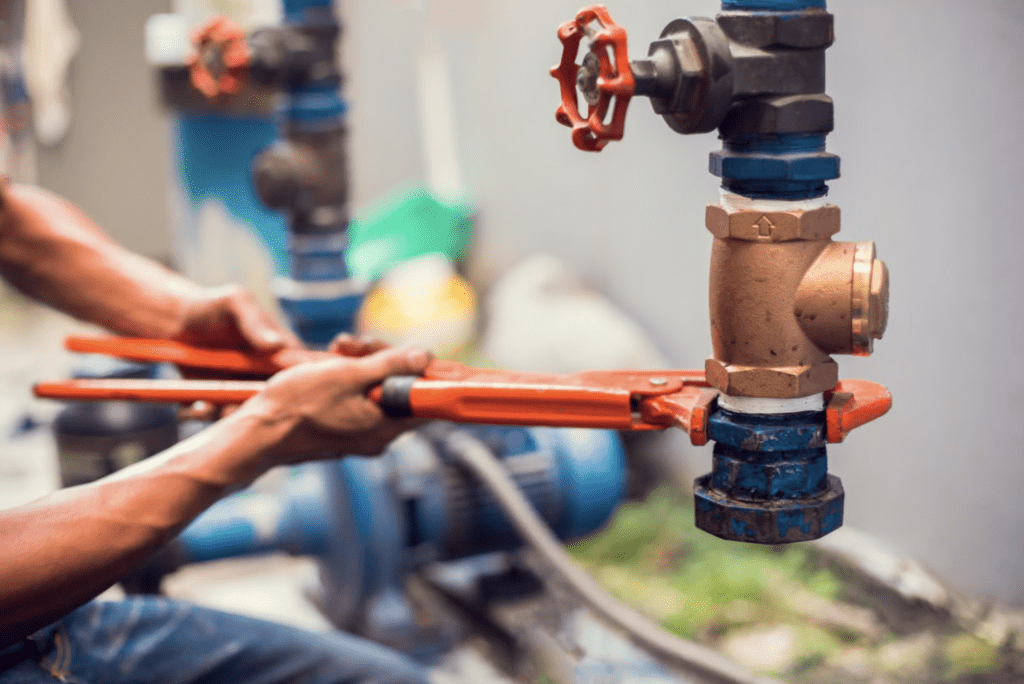
How to Prevent And Understand Backflow in Plumbing
If you’re like most people, you probably don’t realize just how much you depend on your home’s plumbing system. Without it, even simple, everyday tasks like washing your hands, doing dishes, and taking a shower wouldn’t be possible. Though basic activities like bathing, cleaning, washing dishes, and doing laundry are as simple as turning on a faucet or starting up an appliance thanks to modern plumbing, home plumbing systems are actually extremely complex.
Considering their complexity and the constant use they’re up against, any number of things can go wrong with home plumbing systems. Those problems range from leaks to a lack of water pressure and beyond. One common plumbing problem is backflow. Understanding backflow installation and maintenance is the key to preventing this issue and all the residual problems it can cause.
What Is Backflow, and Why Is It a Problem?
Backflow occurs when water in a plumbing system flows in the opposite direction from what it’s supposed to. Normally, water should flow from the water supply into your home’s plumbing system. From there, black and gray water should flow out of your home and into your septic tank or the public sewage system. If you have a backflow problem, it means black and gray water are flowing back into your incoming water supply.
There are two types of backflow: back pressure and back siphonage. Back pressure happens when the pressure in a home plumbing system is greater than the pressure in the incoming water supply. Back siphonage occurs when there’s a loss of pressure in the main water supply, and that creates a vacuum effect.
Backflow can be a serious problem for several reasons. For one, it could contaminate your incoming clean water with any number of pathogens and pollutants. That places everyone in your home in danger. The danger could extend throughout your entire neighborhood or even beyond if those contaminants make their way into the main local water supply. Besides the health risks, backflow could damage your plumbing pipes and fixtures.
How to Prevent Backflow
It’s possible to reduce the risks of backflow by installing devices known as backflow preventers. Several types of preventers are available. Double check valve assemblies, for one, have two spring-loaded check valves that work in tandem to stop backflow. Reduced pressure principle assemblies consist of two check valves with a relief valve between them. Atmospheric vacuum breakers use atmospheric pressure to prevent backflow. Pressure vacuum breakers can also be used to eliminate backflow. Each of these devices is used in different situations and to handle specific backflow problems.
Backflow Maintenance
Installing backflow prevention devices is only part of an ongoing effort to keep backflow from happening. Routine maintenance is the key to effective prevention. That includes scheduling annual professional inspections from a Plumber Dillon CO (or similar) and testing to ensure backflow prevention devices are in good condition and working properly. Most backflow prevention devices last 10 to 15 years, but eventually, they wear out. When they do, it’s important to have them replaced.
Protecting Your Home and Family With Backflow Prevention and Maintenance
Backflow can potentially be a problem in any home, but the risks vary based on certain factors, like the age of a home, the area in which it’s located, and what may be connected to its plumbing system. It’s important to understand the risks and take the appropriate measures to prevent this issue. In addition to understanding risks and having backflow prevention devices installed, ongoing inspections and maintenance are essential.
With a solid foundation in technology, backed by a BIT degree, Lucas Noah has carved a niche for himself in the world of content creation and digital storytelling. Currently lending his expertise to Creative Outrank LLC and Oceana Express LLC, Lucas has become a... Read more